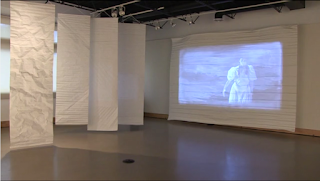Jennifer Doyle: "Sex, Paranoia & the Workplace" - Response by Tim Dean
Monday, April 3, 2017
[On March 30, the Unit for Criticism & Interpretive Theory hosted the lecture "Sex, Paranoia & the Workplace" The speaker was Jennifer Doyle, Professor of English at UC-Riverside. Below is a response to the lecture from Tim Dean, Professor of English.]
Response to Jennifer Doyle's "Sex, Paranoia & the Workplace"
by Tim Dean, Professor of English
Read more
Response to Jennifer Doyle's "Sex, Paranoia & the Workplace"
by Tim Dean, Professor of English
Jennifer Doyle and I met for the very
first time today; but I have admired her work for over a decade, and all the
more so after reading her recent book, Campus
Sex, Campus Security (published by Semiotext(e) in 2015). One of the things I admire most is her
capacity to keep the critical lens focused on sex, especially at a time
when the field of Queer Studies has retreated from the difficulties of thinking
sex in favor of other objects of study. From
her first book, titled Sex Objects: Art
and the Dialectics of Desire (2006), Professor Doyle has focused on how
libidinal energies and impasses shape the cultural and social fields. This focus strikes me as deeply psychoanalytic,
even when Doyle steers clear of particular psychoanalytic methods and
vocabularies. In my remarks today, I
want to situate her reading of Freud’s “Case of Paranoia” in relation to her
work as a whole, before opening the floor to discussion. I would like to articulate a number of
observations and questions, but I will try to be brief.
In both her reading of Freud’s case
and her recent book, Doyle is interested in the desires, anxieties, and
disavowals that structure the workplace—including our workplaces at public
universities. In her reading of Freud,
she has an explanation for why the workplace has become intolerable for the
woman in question. And in her book Campus Sex, Campus Security, she has an
explanation for why our working conditions at public universities have
increasingly become intolerable. But
they are not the same explanation, even though both turn on “sex.”














